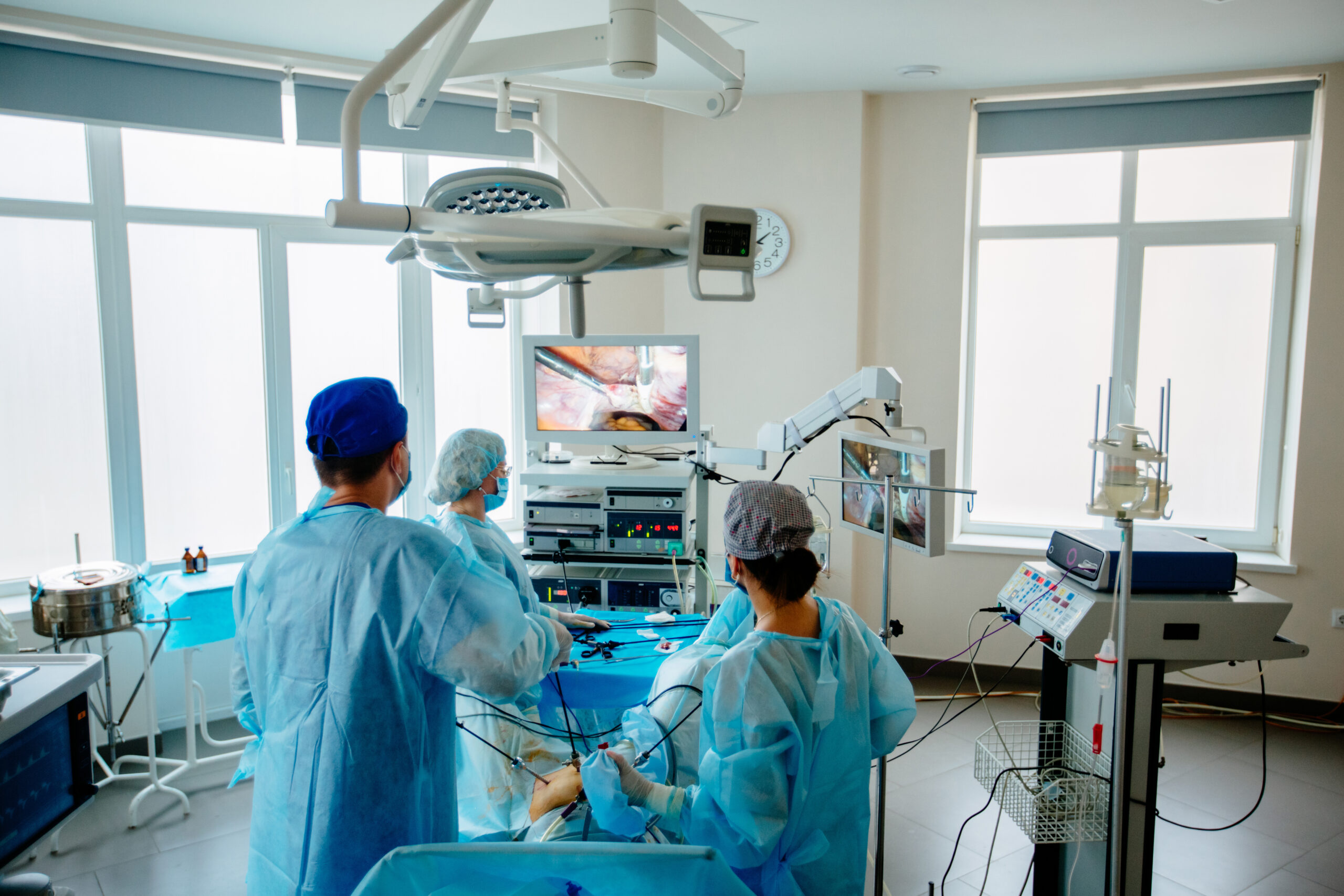Laparoscopic myomectomy is a minimally invasive surgical procedure designed to remove uterine fibroids through small abdominal incisions. Here’s what you need to know about that advanced technique:
- In laparoscopic myomectomy, your surgeon begins by making a small incision in or near your belly button.
- A laparoscope, equipped with a camera, is then inserted through this incision to provide a clear view of the abdominal cavity.
- Using specialized instruments inserted through other small incisions in the abdominal wall, your surgeon carefully removes the fibroids.
- This approach offers benefits such as reduced blood loss, shorter hospital stays, quicker recovery, and lower rates of complications and adhesion formation compared to traditional open surgery (laparotomy).

Fibroid Removal Techniques in Laparoscopic Myomectomy
Morcellation: The fibroid is cut into smaller pieces and removed through a small incision in the abdominal wall.
En-bloc Removal: Occasionally, a larger incision is made in the abdomen to remove the fibroid without fragmentation.
Vaginal Removal: In rare cases, the fibroid may be removed through an incision in the vagina (colpotomy).
By opting for laparoscopic myomectomy, patients can benefit from minimized scarring, reduced recovery time, and a quicker return to normal activities compared to traditional open surgery. These advanced techniques offer effective solutions for managing uterine fibroids with fewer risks and complications, helping patients achieve improved quality of life and reproductive health.
Risks of Myomectomy
While myomectomy is generally considered a safe procedure, it does carry certain risks and potential complications. It’s important to be aware of these risks before undergoing the surgery:
- Excessive Blood Loss: Women with uterine leiomyomas often experience heavy menstrual bleeding, which can lead to low blood counts (anemia). This puts them at a higher risk of complications related to blood loss during myomectomy. Surgeons take precautions during the procedure to minimize bleeding, such as using tourniquets, clamps, and medications to constrict blood vessels. However, the risk of needing a blood transfusion may still exist.
- Scar Tissue Formation: Incisions made into the uterus to remove fibroids can result in the formation of adhesions, which are bands of scar tissue. Laparoscopic myomectomy, compared to abdominal myomectomy, may reduce the risk of adhesion formation.
- Pregnancy or Childbirth Complications: Myomectomy can increase certain risks during pregnancy and delivery. If a deep incision was made in the uterine wall during the procedure, there is a rare possibility of uterine rupture during labor, prompting the need for a cesarean delivery (C-section). Additionally, fibroids themselves are associated with pregnancy complications.
- Rare Chance of Hysterectomy: In rare cases, if bleeding during myomectomy is uncontrollable or if other abnormalities are discovered alongside fibroids. The surgeon may need to perform a hysterectomy (removal of the uterus).
- Rare Chance of Spreading Cancerous Tumors: While extremely rare, there is a risk of mistaking a cancerous tumor for a fibroid. Removing the tumor, especially if it’s fragmented for removal through a small incision (morcellation), can potentially lead to the spread of cancerous cells. This risk increases with age and menopause.
Benefits and Considerations After Myomectomy Surgery
Myomectomy surgery offers several benefits for women suffering from uterine fibroids, including:
- Symptom Relief: Following myomectomy surgery, many women experience significant relief from troublesome symptoms such as excessive menstrual bleeding, pelvic pain, and pressure. This improvement in symptoms enhances overall quality of life and well-being.
- Fertility Improvement: Laparoscopic myomectomy, has been associated with positive pregnancy outcomes. Within approximately one year of surgery, women often observe improvements in fertility and may have successful pregnancies. It is generally recommended to wait three to six months after myomectomy before attempting to conceive. Allowing the uterus adequate time to heal.
Despite these benefits, it’s important to consider certain factor
Precautions for Pregnancy: While myomectomy can improve fertility, it’s essential to discuss pregnancy plans with your healthcare provider. Following surgery, it may be necessary to wait for the uterus to heal adequately before attempting conception. Additionally, close monitoring during pregnancy is crucial to ensure optimal outcomes for both mother and baby.
In conclusion, myomectomy surgery offers significant benefits, including symptom relief and improved fertility. However, it’s important to be aware of the potential for fibroid recurrence and to take appropriate precautions, particularly when planning for pregnancy. Consulting with a knowledgeable healthcare provider can help individuals make informed decisions regarding their treatment options and reproductive health journey.


